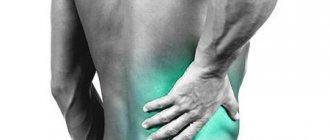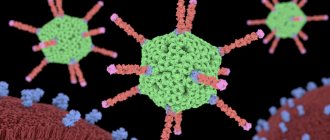Co-author, editor and medical expert - Klimovich Elina Valerievna.
Number of views: 21 247
Last updated date: 11/16/2021
Average reading time: 3 minutes
Pain in the upper abdomen is perhaps one of the most common complaints with which patients consult a gastroenterologist. This is a rather complex symptom that can be triggered by a number of factors. It can be temporary or permanent and indicate the occurrence of a particular digestive tract problem that needs to be addressed.
Causes of pain in the upper abdomen after eating
Poor nutrition
Very often, the cause of abdominal pain after eating is nutritional errors. Failure to adhere to the daily routine, overeating, late dinner, dry food, rapid absorption of food, and low fluid intake during the day can lead to painful sensations. Also, fatty meat, dairy products, rough plant foods, brown bread, canned food, vegetable marinades, fructose, sorbitol, lutein and alcoholic beverages can trigger pain in the upper abdomen.
Food allergies
One type of food intolerance, leading to nausea, vomiting, pain in the stomach and upper abdomen, and various skin manifestations, is an allergy. The most powerful allergens include cow's milk, fish proteins, eggs, and seafood. Some vegetables, fruits and cereals (wheat and rye) can also provoke the development of an allergic reaction.
Digestive system diseases
Sometimes pain in the abdomen or directly in the stomach is one of the symptoms of diseases of the digestive organs. Regular or acute pain, accompanied by indigestion and increased body temperature, is a reason for mandatory consultation with a doctor.
to come back to the beginning
University
→ Home → University → University in the media → Chronic abdominal pain
Chronic abdominal pain is a complex diagnostic and treatment problem in pediatrics and, at the same time, one of the main complaints of children and their parents, a common reason for visiting a doctor. Chronic is defined as abdominal pain that lasts more than 3 months. In children, recurrent is more common, which is said to occur in cases where it is repeated at least 3 times within 3 months. and affects the child’s normal activity.
The nature of chronic abdominal pain can be organic and functional.
Organic diseases. Identification of the cause of chronic abdominal pain in children due to organic diseases is based on: 1) anamnesis; 2) physical examination; 3) laboratory research; 4) radiation and endoscopic research methods; 5) assessing the effectiveness of empirical treatment.
Determining the localization of abdominal pain in childhood has its own peculiarities. Thus, up to 3 years of age, children almost always detect pain in the navel area.
Older children localize pain more accurately. Of particular interest is the observation of J. Apley: “The further the pain is located from the navel, the greater the likelihood of an organic disease.”
Help in identifying the cause of chronic abdominal pain can be provided by parents keeping a diary, which records the type of food eaten and the symptoms observed after it for 2 weeks. In this case, it is possible to detect potential causes of some symptoms, for example, lactose intolerance, etc. It is also necessary to record the use of medications and all therapeutic measures. Family history may indicate a predisposition to gastric and duodenal ulcers, pancreatitis, inflammatory diseases of the biliary system, intestines and a number of other diseases.
During the study, fever, complaints of painful sensations in the joints, the presence of a rash, etc. are recorded. The presence of one or more of the listed symptoms suggests the inflammatory or infectious nature of the pain syndrome.
Since there is a connection between abdominal pain, nutrition and the physical development of the child, data on the patient’s height and body weight is required.
A full clinical examination is carried out, followed by focusing on the abdomen. Pain during examination of the abdomen will be indicated by a grimace on the child’s face or a remark. Important findings are enlargement of the liver, spleen, the presence of space-occupying formations, as well as localization of pain. Further diagnostic search is carried out taking into account the obtained data.
If topical diagnosis is not possible at the outpatient stage, the examination is continued in a hospital or in a diagnostic center. Here they carry out endoscopic examination (fibrogastroduodenoscopy, colonoscopy), biopsy (according to indications), sonography, radiography (cholecystography, irrigography), CT, MRI, scintigraphy, acidometry; determination of the enzymatic function of the digestive tract, electrophysiological study, stress tests, study of biochemical parameters of blood and urine, intestinal microbiocenosis, genetic examination, etc.+
Other methods of laboratory examination are used in connection with the characteristics of the data obtained. These include liver enzymes and amylase, serologic testing for H. pylori and amoebiasis, and stool culture and parasite testing. A study for lactose intolerance is carried out if the evaluation of the empirical diet does not produce results. Analyzing the child's body's response to treatment is part of the diagnostic process. For example, taking antibiotics can predispose to the development of intestinal dysbiosis, medications for the treatment of acne can predispose to esophagitis, and tricyclic antidepressants can predispose to constipation.
Main causes of abdominal pain
The most common causes of chronic abdominal pain are: chronic gastritis, duodenitis and gastroduodenitis. There are chronic gastritis type A (autoimmune), gastritis type B (associated with H. pylori) and gastritis type C (chemical or reflux gastritis). Type B gastritis is more common and is accompanied by severe pain that occurs on an empty stomach or 1-2 hours after eating. There is pain and sometimes tension in the abdominal wall in the epigastrium and pyloroduodenal area. Endoscopically, structural and inflammatory changes in the antrum of the stomach are revealed.
Duodenitis and gastroduodenitis are also characterized by pain associated with food intake or its nature (fried, spicy), as well as with long breaks in food. Dyspeptic syndrome is manifested by nausea, vomiting, which brings relief, belching, and heartburn. Symptoms of chronic intoxication and vegetative-vascular dystonia are often observed. Pain in the epigastric region is detected.
Peptic ulcer of the stomach and duodenum in children, unlike adults, often does not have clear clinical symptoms, since it is often characterized by the presence of superficial ulcers. The leading symptom is pain in the epigastrium or pyloroduodenal region, occurring on an empty stomach or 1-3 hours after eating, often at night and more severe than with gastroduodenitis. Eating temporarily relieves the condition. Hidden bleeding is possible. Endoscopic examination is decisive in diagnosis.
Chronic abdominal pain may be associated with esophagitis, which develops due to gastroesophageal reflux. This is characterized by pain behind the sternum during meals, in the epigastric region, a sensation of passing a food bolus, and dysphagia. Belching with a sour smell and heartburn are observed. Relatively rarely, the cause of chronic pain in the upper abdomen can be gastroptosis and hiatal hernia. In this case, pain occurs 2–3 hours after eating, especially in a horizontal position of the child, when bending forward and physical activity. This pathology can be assumed in the absence of effect from therapy for esophagitis and gastroduodenitis.
The cause of chronic abdominal pain can be chronic enteritis, colitis, enterocolitis. In this case, the pain is localized in the navel, hypogastric region on the left and right. It often occurs in the afternoon, sometimes 1.5–2 hours after eating. Its appearance is provoked by the consumption of large quantities of fresh vegetables, fruits, and milk. The pain is accompanied by bloating, rumbling, and intensifies with physical activity. If it is localized on the right, it is necessary to exclude acute appendicitis. Chronic intestinal damage is characterized by stool disorder - alternating diarrhea (with enteritis) and constipation (with colitis).
Nonspecific ulcerative colitis and Crohn's disease are characterized by recurrent abdominal pain, paroxysmal or constant. They are localized throughout the abdomen, to the left, to the right of the navel, but more often in the lower abdomen, intensifying after eating or physical activity. The stool is unstable, diarrhea gives way to constipation, mucopurulent or bloody stools, and the presence of tenesmus are noted.
Diagnosis is relatively simple if there are bloody stools, forced bowel movements at night, the presence of a perianal inflammatory process or a mass formation in the right iliac region (inflammatory bowel changes). Delayed sexual development, anemia, aphthous ulcers in the mouth, chronic hepatitis, synovitis or arthritis of large joints may occur. The diagnosis is established on the basis of irrigography and colonoscopy with biopsy.
When analyzing complaints from a child and his parents, you should pay attention to:
• duration of pain. Short-term is more often associated with motor disorders, long-term (more than 3 hours) - with inflammatory causes;
• connection of pain with the intake and nature of food;
• with defecation;
• presence of symptoms of “upper dyspepsia” - belching, heartburn, nausea, vomiting;
• bowel dysfunction.
A significant group of children with chronic abdominal pain consists of patients with cholepathy. These include diseases of the gallbladder and biliary tract - developmental anomalies, inflammatory, parasitic, tumor diseases, cholelithiasis. The pain is provoked by the nature of the food (spicy, fatty, fried). Characterized by nausea, vomiting that does not bring relief, belching, bitterness in the mouth, changes in stool (constipation, diarrhea), and sometimes uneven coloring of individual stool fragments. With the inflammatory nature of cholepathy, prolonged low-grade fever or febrile body temperature during an attack is possible. There is pallor of the child's skin, sometimes telangiectasia, and subicteric sclera. There is pain in the right hypochondrium. With severe cholestasis, liver enlargement is possible, which disappears after choleretic therapy.
Other forms of damage to the biliary tract (cholelithiasis, developmental abnormalities, tumors, parasitic diseases) do not have specific symptoms and are detected mainly during a paraclinical examination of the child.
Chronic abdominal pain may be associated with pancreatic pathology. Acute pancreatitis, in particular the edematous form, is both an independent disease and a reactive condition against the background of other pathologies of the digestive organs. Destructive forms of pancreatitis in children are rare. Chronic pancreatitis occurs with paroxysmal abdominal pain. Their localization depends on the area of damage to the pancreas. Its total defeat is characterized by intense girdling pain, which is accompanied by severe anxiety of the child, vomiting, which does not bring relief, sometimes indomitable. There is a disorder of the stool - constipation, more often diarrhea. Symptoms of intoxication are expressed.
The cause of chronic abdominal pain in children can be helminthiasis. In this case, the pain does not have any specificity and is accompanied by chronic intoxication, loss of appetite, drooling, and bruxism.
The second group that causes the presence of chronic abdominal pain is diseases of the urinary system: pyelonephritis, nephroptosis, vesicoureteral reflux, cystitis, urolithiasis, dysmetabolic nephropathy and more rare kidney pathology. These diseases are characterized by pain, often not associated with eating. In case of urolithiasis, nephroptosis, attacks can be provoked by hypothermia and physical activity. The pain is localized near the navel, lower abdomen, and lower back.
With vesicoureteral reflux, it is felt along the ureter. In this case, right-sided reflux can simulate acute appendicitis. When the kidneys are fused (horseshoe-shaped, biscuit-shaped, S- and L-shaped), the pain is localized in the epigastric region and is accompanied by dyspeptic disorders. Cystic formations of the kidneys lead to pain in the epigastrium, sometimes to renal colic. Colic is also characteristic of urolithiasis, dysmetabolic nephropathy, nephroptosis, hydronephrosis. With hydronephrosis, a nagging, dull pain in the abdomen is possible, accompanied by flatulence and dyspeptic disorders. With pyelonephritis, prolonged low-grade fever or “unmotivated” rises in temperature are noted. In general, the pathology of the urinary system is characterized by dysuric symptoms.
The group designated as “other diseases”, which may cause chronic abdominal pain in children, is represented by a variety of pathologies, including rare ones. However, gynecological pathology is more often observed in girls - salpingitis, adnexitis, ovarian cysts. The pain is often localized in the lower abdomen, in the mesogastric region, and can be acute, paroxysmal and nagging, aching, constant, radiating to the lower back. In menstruating girls, it is possible in the lower abdomen during the ovulation cycle. Functional diseases. The greatest difficulty is in the interpretation of chronic abdominal pain caused by functional disorders of the digestive system, when examination of the child does not reveal the morphological cause causing the pain. In accordance with the Rome criteria (Rome, 2006), several common signs are identified for functional disorders, regardless of the type of lesion:
• duration of main symptoms is at least 3 months. over the past year;
• absence of organic pathology;
• multiple nature of complaints (not only disorders of the digestive system) with the general good condition of the patient and a favorable course of the disease without noticeable progression;
• the importance of psychosocial factors and neurohumoral regulation disorders in the formation of the main symptoms.
The diagnosis of any functional disorder is a diagnosis of exclusion. It can be diagnosed only after a thorough examination of the patient and exclusion of organic causes that cause pain and other symptoms of the disease. Children should have no “alarm symptoms” - weight loss, loss of appetite, fever, changes in peripheral blood tests, blood in the stool, etc.
Psychosocial factors and social maladaptation are important in the pathogenesis of functional disorders and chronic abdominal pain. It is believed that they may be primary in the development of functional disorders and, in combination with genetic predisposition, determine the formation of the type of motor disorders and visceral hyperalgesia. The interdependence of the central nervous system and all peripheral influences leads not only to direct dysfunction of the gastrointestinal tract, but also to neuropsychological abnormalities. As a result, functional disorders are based on motor dysfunction caused by the failure of regulatory relationships on the brain-gastrointestinal axis.
Intestinal motility disorders in functional disorders can occur as hypotension, atony, or have a mixed nature. In functional disorders accompanied by chronic abdominal pain, in addition to motor disorders, sensory deviations characterized by visceral hypersensitivity (hyperalgesia) are typical. There is a change in the sensitivity of the receptor apparatus to irritants and a decrease in the pain threshold.
Chronic recurrent abdominal pain in children has a variety of causes. To make a correct diagnosis, it is necessary to take into account “symptoms of anxiety” and use targeted diagnostic methods depending on the clinical course and location of the pain syndrome.
Patients describe abdominal pain in functional disorders in different ways - from unpleasant sensations to unbearable, cramping pain without clear localization, occurring for no apparent reason or associated with eating, stress, physical activity, or defecation. In this case, the peculiarity of the pain syndrome is that it occurs in the morning or daytime, when patients are active, and subsides during sleep.
In children in the first months of life, chronic recurrent abdominal pain manifests itself in the form of intestinal colic, which manifests itself as restlessness and crying. To diagnose intestinal colic, the so-called “rule of three” is used - crying for 3 or more hours a day, at least 3 days a week for 3 weeks in a row. Colic appears in a child at the age of 6 weeks and can be observed until 3-4 months. Intestinal colic is caused by the tension of the digestive processes in conditions of physiological immaturity of the infant's gastrointestinal tract and the load on the intestines, which is associated with a large volume of nutrition. At the same time, children gain weight well, maintain a positive emotional mood, appetite, and normal bowel movements.
With functional stomach disorders, pain occurs regardless of food intake - short-term, of varying intensity, localized in the epigastric region. Sometimes pain appears after mental stress and is more often observed in emotionally labile children. The attacks are accompanied by symptoms of autonomic instability. The examination reveals moderate pain in the epigastrium and right hypochondrium. Endoscopic examination is decisive in diagnosis. In this case, the absence of morphological changes and impaired motor function of the upper gastrointestinal tract in the form of spasm or hypotension of the sphincters, impaired peristalsis are revealed.
Pain based on functional disorders is characterized by:
• absence of disease progression;
• the changing nature of complaints;
• the patient's assessment of pain as very severe;
• the presence of numerous complaints concerning other organs and systems;
• short medical history;
• parents’ excessive demands on the child, problems at school;
• emotional stress in the family;
• absence of objective changes during examination.
Pain based on functional disorders is not characterized by:
• local stereotypic pain;
• awakening from pain during sleep;
• special behavior during attacks;
• anorexia;
• vomit;
• persistent constipation or diarrhea;
• presence of chronic gastrointestinal diseases in family members;
• retardation in physical development or loss of body weight;
• fever;
• joint pain;
• blood in the stool.
Biliary dysfunctions . Biliary dyskinesias play a significant role among the causes of chronic abdominal pain. The hypertensive form is characterized by paroxysmal, short-term pain localized in the right hypochondrium, sometimes radiating to the right shoulder and scapula. Vegetative dystonia is pronounced. There is pain in the right hypochondrium. This form of dyskinesia is based on spasm of the sphincter apparatus of the biliary system.
With the hypotonic form of dyskinesia, the pain is often moderate, but longer lasting. The pain is provoked by physical activity, eating fatty foods, and overeating. There is moderate pain in the right hypochondrium, an enlarged but soft liver. This dyskinesia is based on stagnation of bile in the biliary system and a decrease in the motor-evacuation function of the gallbladder.+
Functional disorders of the gallbladder are manifested by impaired contractile function, slower evacuation of bile and stretching of the bladder, which causes pain. Dysfunction of the sphincter of Oddi may be associated with functional, motor, usually spastic disorders of the sphincter of the common bile duct, sphincter of the pancreatic duct or common ampullary duct. Depending on this, symptoms of damage to the biliary tract, pancreas, or joint changes predominate.
Irritable bowel syndrome . The most common and best studied among functional disorders of the digestive canal. The disease is manifested by abdominal pain, impaired bowel movements, and flatulence. Due to the lack of a clear conceptual apparatus in young children, it is difficult to clarify subjective sensations that are pathognomonic for establishing this diagnosis in strict accordance with the Rome criteria. Symptoms that can be used to diagnose irritable bowel syndrome are:
• stool frequency less than 3 times a week;
• stool frequency more than 3 times a day;
• hard or bean-shaped stool;
• thin or watery stool;
• straining during defecation;
• imperative urge to defecate (impossibility of delaying defecation);
• feeling of incomplete bowel movement;
• secretion of mucus during bowel movements;
• feeling of fullness, bloating or transfusion in the abdomen.
A significant role in the pathogenesis of irritable bowel syndrome belongs to the psycho-emotional status of the patient, as well as the presence of autonomic dysfunction. Psychopathological disorders in such children are characterized by a shallow level of damage (neuroses, neurotic reactions). The close connection between depression and chronic abdominal pain is explained by general biochemical processes, and primarily by the insufficiency of monoaminergic (serotonergic) mechanisms. This is supported by the effectiveness of antidepressants, especially serotonin reuptake inhibitors, in the treatment of abdominal pain.
There are two main forms of irritable bowel syndrome—hypertensive and hypotonic.
The hypertensive form is characterized by periodic cramping pain of uncertain localization or in the left iliac region. In this case, the abdomen is swollen, spastic contraction and soreness of the descending and sigmoid colon are determined by palpation. Constipation is common. After defecation, the pain decreases.
The hypotonic form is characterized by a feeling of discomfort, distension, bloating with moderate and intermittent pain. After defecation, the pain usually disappears.
The diagnosis of irritable bowel syndrome is a diagnosis of exclusion, requiring a thorough analysis of complaints, anamnesis, clinical laboratory and biochemical blood tests, instrumental studies to exclude organic intestinal pathology (ultrasound, colonoscopy, irrigography, parasitological studies, etc.). An etiological treatment for this syndrome has not yet been developed. Currently used therapy is aimed at individual known links in pathogenesis. One of them is the normalization of the microbial composition of the intestine. Correction of dysbiotic disorders, as well as prevention of their development, can be achieved with the help of functional nutrition. The use of myotropic antispasmodics is recommended. Since one of the leading mechanisms of the pathogenesis of irritable bowel syndrome is autonomic dysfunction and neuropsychiatric disorders, therapy includes drugs that correct these disorders.
Functional abdominal pain syndrome . Abdominal pain without intestinal dysfunction is classified as a separate category. This syndrome is defined as constant, almost constant or often recurrent abdominal pain, which is characterized by the following features:
• last for at least 6 months;
• are not associated with specific physiological factors (food intake, defecation, menstrual cycle, etc.);
• accompanied by a decrease in physical activity;
• characterized by a non-progressive course;
• do not have signs that would allow these pains to be attributed to other functional disorders of the gastrointestinal tract.
Functional abdominal pain syndrome is observed in prepubertal age with two frequency peaks. The first corresponds to the age of 5–7 years, is observed in 5–8% of children and often coincides with their sending to school. The second peak occurs in almost 25% of children and is observed at the age of 10–12 years with the highest frequency in girls. This syndrome is considered as a biopsychosocial disease. In this case, pain is caused by amplification (strengthening) of the perception of pain in the cerebral cortex due to excessive afferent impulses (to a lesser extent) and its insufficient descending suppression (to a greater extent). The process of amplification of pain is facilitated by mental stress - the death of parents, previous operations, the anniversary of a tragic event, etc.
Much attention in the development of functional abdominal pain syndrome is paid to episodes of physical or sexual coercion of children. Anamnesis-wise, they are detected in adolescence in 64% of patients with this syndrome (2.8 times more often than in children with organic diseases). The presence of such episodes causes patients to desire diagnostic tests, prompts them to frequently consult a doctor, and causes resistance to prescribed treatment. It is characteristic that patients, as a rule, do not tell the doctor about such episodes, and identifying them requires delicate formulation of questions.
In functional abdominal pain syndrome, the latter is not associated with physical activity and in most cases is accompanied by vegetative signs (pallor, nausea, dizziness, malaise, etc.). There is often a family history of a predisposition to functional bowel diseases.
When questioning patients, it is possible to identify a number of features of the pain syndrome: pain exists for a long time (months, years) and is localized in various parts of the abdomen; often diffuse, emotionally described as very intense, constant, having no connection with food intake and the act of defecation. Patients often say that “if it weren’t for pain, life would be wonderful.” They insist on various diagnostic studies and surgical interventions.
An objective examination of some patients reveals postoperative scars on the anterior abdominal wall, indicating operations, sometimes performed without objective indications. It is possible to identify a “closed eyes symptom” - when palpating the abdomen, the patient closes his eyes, while a patient with acute abdominal pain due to organic causes watches the doctor with open eyes, fearing increased pain. The “phonendoscope symptom” is known - pressing with a phonendoscope on the anterior abdominal wall during functional abdominal pain syndrome does not cause increased pain, whereas in pain associated with an acute surgical disease, this manipulation turns out to be very painful.
The diagnosis of functional abdominal pain syndrome should be a diagnosis of exclusion. It is legitimate to place it only after a thorough examination, including not only laboratory testing of blood, urine, feces, but also echography of the abdominal organs, endoscopic (FGDS, colonoscopy) and, if necessary, radiation research methods (x-ray, CT, MRI, scintigraphy, etc. .). In cases where the diagnosis still remains unclear, the issue of performing laparoscopy is discussed.
Chronic abdominal pain may be due to cyclic vomiting syndrome (abdominal migraine), described by J. Gee in 1882 under the name “periodic syndrome.” The disease is characterized by episodic attacks of nausea, abdominal pain, vomiting, usually starting at night or in the morning and lasting from 6 to 48 hours with subsequent intervals of well-being (weeks, months). Most children experience autonomic disorders (pallor, diarrhea, weakness, tachycardia, etc.). Treatment consists of prescribing antiemetics or migraine medications. Yuri ABAEV , Professor of the Department of Pediatric Surgery of BSMU, Doctor of Medicine. Sciences Medical Bulletin, August 7, 2008
Share
The nature of pain in the upper abdomen after eating
Acute intense pain
This feeling in the upper abdomen can be caused by food poisoning, overeating, constipation, indigestion, physical fatigue, muscle tension, injury, viral or bacterial infection, various psychogenic factors and many other reasons, sometimes not amenable to diagnosis.
Burning pain
Burning pain in the upper abdomen is often a consequence of eating hot, salty, sour or spicy foods, which irritate the gastric mucosa and lead to increased secretion of gastric juice.
Constant nagging pain
Most often it occurs due to overeating, eating dry food or due to quickly eating food on the go without first thoroughly chewing. Sometimes such a condition can develop as a reaction to certain foods.
to come back to the beginning
Acute pancreatitis has been dealt with. What about chronic?
If the toxic effect on the pancreas does not stop (for example, a person continues to drink excessively) or the organ was very damaged during the first (acute) episode of pancreatitis, the pain returns again and again.
During exacerbations of chronic pancreatitis, blood tests may remain normal. But over time, external signs may appear, which doctors detect by examining the pancreas using ultrasound (ultrasound), X-rays (CT or computed tomography) or magnetic resonance imaging (MRI). These are narrowing of the pancreatic ducts, the appearance of compactions in it - calcifications, as well as the appearance of cysts - bubbles with liquid in place of dead tissue. An examination for suspected chronic pancreatitis is carried out with another important goal - not to miss pancreatic cancer, which may initially be accompanied by the same symptoms.
With constantly renewed inflammation of the pancreas, its function—the secretion of enzymes that digest food—is disrupted over time. As a result, a person is bothered by constant bloating, diarrhea, and the stool becomes greasy (for example, it is difficult to flush from the toilet). This condition - exocrine insufficiency - is most conveniently identified by determining the content of pancreatic elastase (a pancreatic enzyme) in the stool.
img3_0.png
Often, rare and short-lived pain in the upper abdomen is the result of a violation of the diet and errors in diet. To eliminate this unpleasant symptom, it is recommended to regulate the frequency and timing of meals, observing the appropriate rules of eating behavior. Fractional meals in small portions, 4–6 times a day, have worked well. Dinner should take place at least 3 hours before bedtime. You should also limit your intake of foods that are difficult to digest and maintain fluid balance (drink water on an empty stomach and between meals).
Prohibited foods for stomach pain
It will not be possible to improve the condition with depleting drugs alone; nutritional adjustments are necessary. You should stop eating foods that irritate the gastric mucosa. Correct nutritional adjustments will save you from complications. Balanced, gentle food allows you to gradually improve your overall health.
Fatty foods and alcohol are prohibited for stomach pain
You should stop consuming the following foods:
- alcohol,
- seasonings,
- fatty foods,
- mayonnaise.
Products must be of high quality. You should not eat spoiled or expired food. You should limit your consumption of the following list of fruits and vegetables:
- radish,
- cabbage,
- onion,
- cucumbers,
- fruits containing a lot of acid.
You should absolutely not eat hot baked goods. Mushroom soups and borscht should be excluded from the list of soups consumed. Any canned or smoked products should be prohibited. No need to drink coffee. You should give up chocolate and ice cream.
Treatment of heaviness in the stomach associated with diseases of the gastrointestinal tract
If discomfort in the epigastric region bothers you periodically and is accompanied by other symptoms, then you should definitely seek qualified help from a gastroenterologist.
Even before an accurate diagnosis is established, the doctor recommends lifestyle and diet adjustments and prescribes certain medications. After determining the cause of heaviness in the upper abdomen, the specialist determines a therapeutic diet, and also recommends a specific combination of drugs, dosage regimen and duration of therapy. To get rid of stomach discomfort and accompanying manifestations of diseases, groups of medications are used.
- Enzyme preparations. Contain enzymes (amylase, lipase, protease) that are involved in digestion. Recommended for pancreatic dysfunction.
- Prokinetics. Helps normalize the motility of the gastrointestinal system.
- Antacids. Topical compounds that neutralize hydrochloric acid. Mainly used for insufficiency of the cardia and pylorus.
- Agents that reduce the production of hydrochloric acid. These include proton pump inhibitors, H2-blockers and M-anticholinergics. Prescribed for hyperacid gastritis, gastric and duodenal ulcers.
- Drugs that increase gastric secretion, they contain pepsin and acids necessary for atrophic gastritis.
- Gastrocytoprotectors. Medicines that protect against the effects of adverse factors and promote the healing of damaged areas of the walls of the digestive organs. These include analogues of prostaglandin E and bismuth salts.
- Antibiotics. They are part of complex therapy for the destruction of Helicobacter pylori.
- Drugs that affect the secretion and excretion of bile. Used for diseases of the liver and biliary tract.
- Laxatives. Recommended for constipation of various etiologies.
What foods can trigger heartburn?
The likelihood of developing heartburn and belching after eating increases if you consume the following foods:
- all types of citrus fruits;
- products containing cocoa beans;
- coffee, tea, carbonated drinks;
- tomatoes;
- cabbage;
- legumes;
- dairy products (except low-fat fermented milk);
- fatty meats and fish and broths made from them;
- baked goods and sweets;
- sour berries;
- apples;
- hot sauces and almost all spices;
- alcohol3.
A healthy person does not need to completely eliminate these foods, but they do need to monitor their amounts. For those who often experience heartburn, it is recommended to remove the listed foods from their diet so as not to aggravate the condition2.
Diagnostics
A gastroenterologist finds out the causes of heaviness in the stomach after eating and treats the pathology. During the initial consultation, the specialist collects a detailed medical history:
- analyzes complaints, their frequency and duration;
- asks about hereditary and concomitant diseases;
- clarifies whether treatment was carried out previously and by what means.
Then the doctor conducts a physical examination: examines the skin, sclera, mucous membranes, palpates the abdomen, and checks for pathognomonic symptoms using special methods. Based on the information received, he makes a preliminary diagnosis, then prescribes a series of instrumental and laboratory tests.
- Fiber gastroduodenoscopy (FGDS) is an examination of the walls of the esophagus, stomach and duodenal bulb using an endoscope. During the procedure, the doctor plucks tissue from pathologically changed areas, that is, performs a biopsy. Based on the results of histological examination, the form, stage, and activity of the pathological process are judged, and precancerous and cancerous conditions are verified. They also determine the presence of Helicobacter pylori, a bacterium that is the direct cause of ulcers.
- Colonoscopy is an endoscopic method of visual examination of the large intestine, during which a biopsy is performed.
- X-ray examination using barium contrast agent. Using a series of photographs of the upper part of the digestive system, organic defects in the walls (for example, ulcers) are determined and the motor function of the stomach is judged. Most often used to determine the stage of pyloric stenosis.
- Ultrasound examination (ultrasound) of the abdominal cavity. This technique is used as a screening examination method, as it allows one to identify developmental anomalies, the location of organs, inflammatory and degenerative processes, tumors, stones in the gall bladder and pancreas.
- Computed and magnetic resonance tomography. These techniques are usually used to clarify the location, size, type, and spread to neighboring organs of space-occupying formations.
- General and biochemical blood test. Allows you to identify anemia, inflammation, liver and kidney dysfunction.
- Fecal analysis for occult blood, dysbacteriosis, helminth eggs, coprogram (examination under a microscope).
Menu for the day
If you have stomach pain, you need to eat small, healthy foods.
Dietary nutrition should be complete, varied, and regular. You need to adhere to the following rules of gentle nutrition:
- The body should receive 3000 kcal worth of food.
- Dishes can be boiled, baked, raw.
- Nothing canned, smoked or pickled is allowed.
- Any fried foods are prohibited.
- Food must enter the body warm.
- Reduce the amount of salt, spices, sauces.
During attacks of pain, you should avoid heavy foods that increase gas formation, such as white bread.
A menu for one day is offered.
Option #1:
- Breakfast: semolina porridge, rosehip decoction;
- Second breakfast: oven-cooked apple, milk;
- Lunch: vegetable soup, buckwheat, cheese;
- Dinner: milk porridge, chamomile infusion.
Option #2:
- Breakfast: cottage cheese;
- Second breakfast: one glass of warm milk, crackers;
- Lunch: puree soup, steamed meatballs, compote;
- Dinner: porridge, fruit.
Option #3:
- Breakfast: porridge with semolina milk, jelly;
- Second breakfast: oven-cooked pear, warm milk;
- Lunch: oatmeal soup, fish cutlets;
- Dinner: chicken cutlets, tea.
A balanced diet will allow the body to recover easily, taking medications will become more effective, and the condition will not worsen. The habit of eating right will have a positive effect on your appearance and health.
Dish recipes
Nutritionists recommend strictly adhering to dietary rules for any stomach pain. If this is not done, then any of the most effective medications will not help. At the same time, you don’t need to think that all the dishes on this menu are tasteless and boring. You can choose options to suit every taste, while not forgetting about the restrictions and recommendations.
Dietary soups should be on the menu daily. They envelop the walls of the stomach, reduce inflammation, and reduce irritation.
A good lunch would be cauliflower soup.
Cauliflower soup
- Boil one head of cauliflower.
- Prepare the sauce separately: pour 1 tablespoon of flour into a frying pan, add cabbage broth, heat everything thoroughly and mix.
- Grind the finished cabbage in a blender.
- Pour one glass of milk into the mixture. Boil everything.
- Mix one egg, 2.5 teaspoons of sour cream, add to the mixture, let it boil, remove from heat.
- Eat warm.
If you have stomach pain, you have to give up salads made from fresh vegetables, but you should make small changes to your usual recipes, and then you can eat them during your diet.
The vinaigrette
Boil the vegetables: carrots, beets, 2 potatoes. Grind everything thoroughly, add dill and a can of green peas. Add a little salt and vegetable oil.
The classic Olivier salad can be changed a little: instead of sausage, put boiled chicken meat, do not add pickles. Season not with mayonnaise, but with low-fat sour cream.
Fish soufflé
- Boil 140 g of lean fish fillet and chop.
- Pour in 1 tablespoon of milk and egg.
- Add a little salt and butter.
- Cook in a double boiler.
Boiled meat with herbs
- Boil 150 g of prepared lean meat.
- Remove the meat, cool, cut into pieces.
- Decorate with greens.









